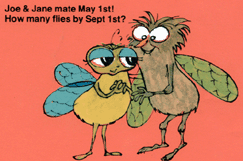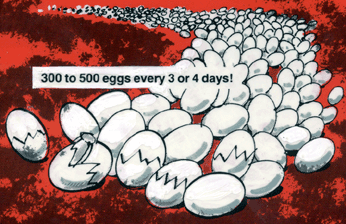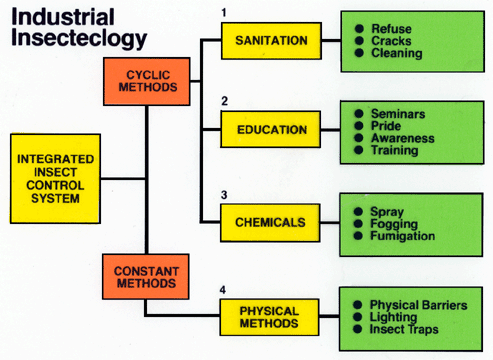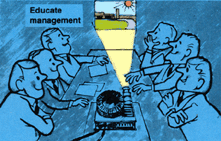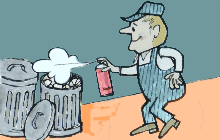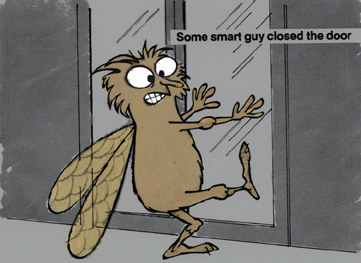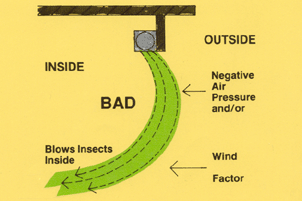|
Effective insect control, especially for flies, depends on four things: sanitation, proper use of chemicals, education of employees and management, and physical methods. The first three are cyclical, that is, they have to be repeated over and over. Physical methods are constant, since once in place, they continue to work effectively with little or no maintenance.
CYCLIC METHODS... 1. Sanitation. Keeping the place clean, especially of food particles which feed insects and support nesting grounds, is obviously a "must". Good sanitation depends on two things: First, one must have rules and facilities for handling refuse and, second, have an awareness on the part of employees of what constitutes a clean plant. The latter point leads to the next requirement.
2. Education and training . . . When it comes to sanitation, most employees bask in woeful ignorance or never think about it in the first place. Certainly, insect control is among the things furthest from the minds of most people. They simply refuse to accept the thought that their plant harbors insects. But, most of all, they do not realize the severity of contamination by insects. This, plus the natural tendency of people to be messy or careless, makes them the insects' number one ally for gaining a foot-hold in a plant. Even sanitation engineers, who should know more about this sort of thing than other engineers, have to be re-trained from time to time in the techniques of desirable sanitation management and pest control.
3. Chemical application . . . We've already touched on the use of chemicals. It's sufficient to say that approved chemicals may be applied routinely, both as a spray and as a fog, as conditions and regulations permit. Considering the absolute genius of bugs to find places for hiding and breeding, this is a job requiring a considerable amount of skill. In fact, more skill than many companies are willing to admit or implement with regularity.
Constant or Physical Methods:
Physical Methods . . . fall into three categories: Physical barriers, proper use of light and insect light traps.
Physical barriers are pretty much what they imply . . . doors, screens, partitions; anything which stops or slows an insect, and keeps him from going from one place to another with ease. In some instances, this is accomplished by putting efficient screens over intakes for make-up air, air conditioning and heating systems. In other instances, positive air pressure is maintained in critical areas of the plant to provide an out-rush of air when doors are opened. Others install
"air curtains" across entrances and between work areas to keep a positive air stream blowing outward from the entrance. An areas of interest is the engineering of air systems to prevent insects from entering work areas. Generally speaking, however, the use of air curtains on exterior doors will be detrimental to good insect control systems.
Whatever the physical barrier, the trick, of course, is to permit people to come and go and keep insects out!
| A clean environment
and traps make sense |
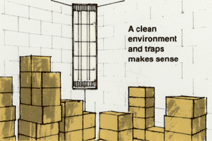 |
